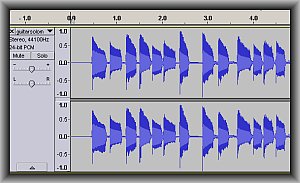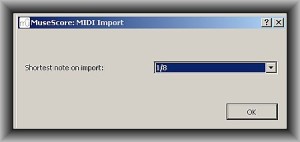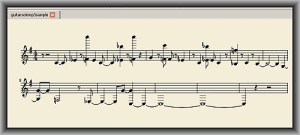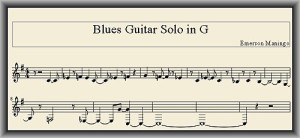One of challenging task for a musician is converting MP3 to music sheet. However a sheet music is a very important piece of document for any music production work. Therefore any musicians who made a raw recording of their performance might find the need to convert these performances to sheet music so that it can be easily remembered and improved.
Basic Requirement for Best Sheet Music Conversion
Although lots of persons may suggest that this is not feasible or possible, there are modern technologies and tools that you can actually use to convert an MP3 to a music sheet. The conversion however is NOT 100% accurate. But if you are a musician, converting it to some form of music sheets can be a very valuable tool for you to remember your piece and helps a lot in transcribing the composition.
The best conversion can be attained if the MP3 sound will be featuring a solo instrument, NOT a mixed of different musical instruments. For example, if you are recording a song with your band and you would like to generate a sheet music of the entire song based on that recording; then this is not possible.
What is possible is to convert EACH instrument recording into sheet music. So you would need to deal with each instrument sheet music rather than the complete mix. The entire conversion process of each instrument recordings are as follows:
Music instrument (guitar solo for example) recording in MP3 === > Convert to 16-bit/44.1KHz WAV file === > Convert to MIDI === > Convert to Sheet Music
In the above process, all you have to do is to convert your MP3 into a WAV audio file format first. After that you need to convert the WAV into MIDI format. Finally, you will be using the MIDI file in creating the music sheet.
If you already have the WAV version of your recording, you don’t need to do any conversion since the file is already in the WAV format.
Actual Example of Conversion Process
Supposing, you have a recording of a blues guitar solo in MP3 format and you would like to notate them in music sheets. Follow the steps below:
Step1.) This is a original MP3 of the guitar solo:
Convert your MP3 file to 16-bit/44.1KHz WAV file. In this tutorial, let’s use Audacity since it’s a free software. Launch Audacity and go to File — > Open. Locate your MP3 file that would like to convert. The MP3 waveform would be loaded in Audacity.

Step2.) In Audacity, go to File — > Export. Specify a file name of the converted file and make sure that the “Save as type” is set to “Wav (Microsoft) signed 16 bit PCM“.

Finally click “Save”. Just ignore the “Edit Metadata” and click “OK”. The MP3 is now converted to WAV format.
Step3.) After converting the MP3 to WAV file. The next step would be to convert WAV to MIDI files. You need to use an open source software called AmazingMIDI. Download it and install that to your computer first.
Then launch AmazingMIDI, first specify the tone file path. I suggest to use:
C:Program FilesAmazingMIDIsample.wav
Then in the “Input file” browse to the converted WAV file. Specify the path where would you like to save the MIDI file.

Step4.) In the AmazingMIDI, click “Transcribe”. You will be presented with transcription options. While you are free to experiment with the settings that would sound best for your project, I am using the following settings:

The primary purpose of that setting is to make the software less sensitive to quiet regions of the audio, so it won’t be accidentally converted into music notes. Click start to complete the conversion to MIDI.
Do not worry that your computer cannot play MIDI and the software automatically plays it after conversion. Simply go to File — > Exit.
Step5.) I recommend playing the converted MIDI file to make sure it sounds closest to the original source MP3/WAV file. For example this is the converted MIDI file of the above example.
Don’t worry about slight mistake in the conversion, you can still correct it during the time it will be converted into a music sheet. If the conversion is too far from the original, you can experiment with various settings on the AmazingMIDI such as changing samples, tone and transcription settings.
Step6.) To finally convert the MIDI file to sheet music, you need another software to do it. I recommend MuseScore since it is free and stable. Download the software and install that first to your computer.
I know that there is a lot of online tools that will convert MIDI to sheet music but they offer a lot of limitations such as MIDI file size or the number of times you can use their tool per day. Using MuseScore will solve all these limitations.
Once you have installed MuseScore in your system, launch it. You will be presented with a demo music sheet. You will need to close by going to File — > Close. Then load the MIDI file to MuseScore by going to File — > Open and browse to the MIDI file location.
After clicking “Open” you will be presented with a MIDI import options. As a tip, if your piece tempo is slow (such as the guitar solo example previously), you can try 1/8 as the shortest note on import. This makes the resulting music sheet to look cleaner.

Finally click OK to complete the process.
Step7.) This is the resulting music sheet converted by MuseScore:

Now you can try playing and editing the music sheet within the software. You can even save and print it as a nice music sheet for your own reference.
Below is the edited music sheet to remove the imperfections of the WAV to MIDI conversion:

And this is the resulting music sheet in PDF format.
And if you like to listen how the edited MIDI (rendered by the music sheet on MuseScore) would sound like (using piano as the MIDI instrument tone):
You will notice that it sounds much like exactly the same with the original audio. This also implies that the music sheet accurately depicts the original notes.
Content last updated on June 22, 2012








No responses yet